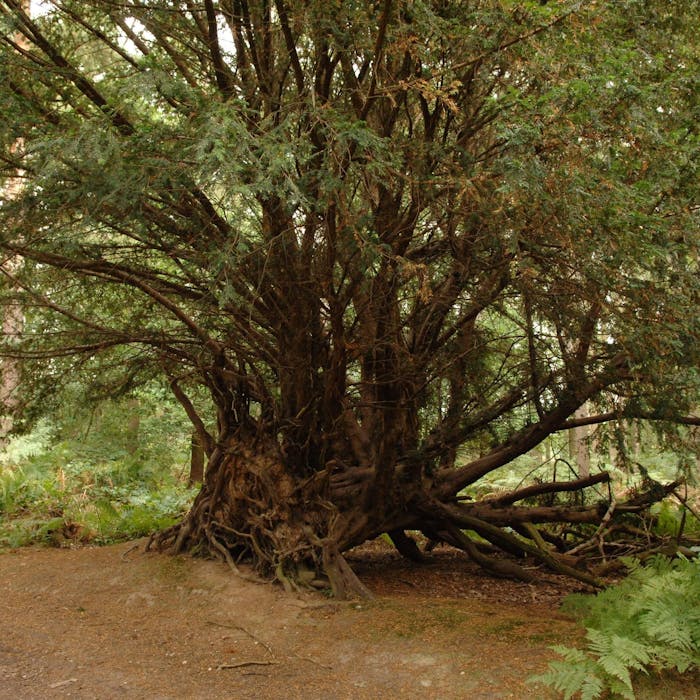
The Fortingall Yew - Britain's oldest tree
The UK's oldest tree is considered to be the Fortingall Yew in the churchyard of the village of Fortingall in Perthshire. It is thought to be 2,000 to 3,000 years old, or even possibly much older.
The tree has connections to early Christianity in Scotland and is believed to be one of the oldest living things in Europe, quite possibly already 3,000 years old when Christ was born. Bizarrely, there is a local legend that Pontius Pilate was born in its shade.
The Fortingall Yew isn’t just ancient, it’s enormous. The massive trunk—which measured 52 feet around in 1769—has now split into several separate trunks, making the yew appear to be a cluster of smaller trees, some as tall as 23 feet.
The tree’s years may be numbered because, according to reports that people keep breaking off its twigs and branches to keep as souvenirs. “It is understandable that people want to touch history in this way and stand on the same ground as people from thousands of years ago,” Catherine Lloyd, coordinator of the Tayside Biodiversity Community Partnership, says. “But the tree does appear to be stressed.”
Yew trees were viewed as sacred in the pagan era and by the early Christians, so it is perhaps not surprising that when a religious community was founded here in the 600s, it should have been established close to what must already have been a huge tree. In 1769 the circumference of the yew’s multiple trunks was measured at 52ft, but this has vastly reduced over time and what remains are the relics and offshoots of the original tree.
Yews are one of the longest lived trees in Northern Europe and are native to Britain. Most of the tree is poisonous to man, particularly the berries. Traditionally, longbows were made of the wood in the medieval period.
There is a heritage trail connected to the Fortingall Yew, which includes the single cairn in the field opposite the village, known as Cairn of the Dead. During the 16th century Scotland was not spared the Great Plague (Galar Mhor) and the parish suffered heavy losses. So many people died that they could not be accommodated in the churchyard and, legend has it that, an old woman, still sufficiently healthy, carried the victims on a horse-drawn sledge to a mass grave in the field and raised a cairn to mark the resting place.
Further reading
Links to external websites are not maintained by Bite Sized Britain. They are provided to give users access to additional information. Bite Sized Britain is not responsible for the content of these external websites.
